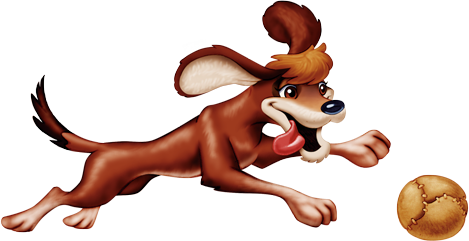Alternative health treatments have become more popular in recent years. Dog owners who have tried these methods want to share the benefits with their canine companions. More and more vets are making these treatment options available for dogs. Any type of treatment outside conventional Western medicine is generally called an “alternative” treatment. Some don’t have decades of scientific studies behind them, though many have thousands of years of use in cultures around the world. The popularity of these alternative treatments for dogs has prompted the American Veterinary Medical Association to issue guidelines for their use.
Before having your dog treated with an alternative technique, consult with your veterinarian first. You don’t want to hurt your pet in the process of trying to help him or her. Always monitor your pet after treatment. If the method is not working, stop using it. When possible, talk with someone with a dog who has already undergone the treatment. You can hear how well the pet reacted and get a referral to who undertook the work. Always check with your state veterinary association to see if an alternative treatment is legal in your state. Every state is different when it comes to who can treat animals and which treatments are allowed.
Five Alternative Health Techniques for Dogs
1. Acupuncture
For well over 3000 years, traditional Chinese medical practitioners have been using acupuncture to treat patients. The treatment is supposed to trigger the body’s natural ability to heal itself. Practitioners believe the techniques help stimulate blood flow, nourish bodily tissues, and boost the body’s systems. It can be used preventively or to treat an already occurring illness.
Traditional Chinese medicine belief focuses on the life force, or ch’i, inside the body. It flows along invisible paths called meridians, which run deep inside the organs and tissues. The flows surface at specific spots on the skin known as acupoints. Each acupoint is associated with specific organs or body parts. Using needles to stimulate these points is supposed to restore and balance the flow of ch’i.
Multiple treatment options exist for treating dogs. Some common options are the classic needle insertion, using needles with electrical stimulation or stimulating the points with a laser. Vets can also use beads, staples or magnets to provide long-term stimulation.
The effectiveness of acupuncture for dogs is still undergoing study. However, there are plenty of pet owners who recommend this treatment for treating pain, chronic digestive issues, epilepsy, and hip dysplasia, among other conditions.
2. Chiropractic Treatment
According to chiropractic doctors, when the bones of the spine are not properly aligned, it can cause the muscles, joints, nerves, blood flow, and connective tissues to be negatively affected. Chiropractors manipulate and adjust the bones along the spine to treat subluxations. These maneuvers are often referred to as adjustments.
In veterinary chiropractic, the adjustment can bring total or partial relief of symptoms. The relief may be temporary if the animal moves the wrong way. To correct the problem long-term, multiple trips to the chiropractor may be necessary.
While this type of treatment is used mainly for pain relief, it can also be used for other situations where nerve flow is disrupted. For this reason, treating spinal subluxations is said to improve the health of internal organs like the heart and stomach.
3. Homeopathy
The practice of homeopathy has been around continuously since the Ancient Greeks. Modern veterinary homeopathic practitioners use six principles to guide their work:
- The body’s attempt to recover system balance results in physical symptoms.
- The energy imbalance occurred before the physical symptoms arose.
- Disease is not a one-time isolated thing. It starts from birth.
- For proper healing, the practitioner must address all symptoms as well as the individual animal.
- There is a lot more than just the symptoms going on inside the body.
- Each symptom is treated individually with the goal of re-balancing the entire system.
The most common homeopathic treatments involve diluted versions of herbs, chemicals, and animal products. Homeopaths recommend eating a natural diet, free of processed foods. They also recommend using the least amounts of vaccines as possible.
4. Massage
Animal massage, like that used on humans, is not meant to cure serious diseases. However, it can be an effective tool for soothing tired muscles and aches. The actual massage can be whole body or focused on specific treatment areas. Massage helps promote blood flow into the tissues, stimulates nerves, releases tension, and stretches muscles. It’s also known to lower blood pressure and give the immune system a boost. The massage should be enjoyable for your dog. If he or she doesn’t like it, discontinue the practice immediately.
5. Holistic Medicine
The philosophy behind holistic medicine is to treat every aspect of the animal, not just the body. It embraces the use of multiple treatment options such as diet, nutrition, lifestyle, home environment, and the psychological state of the dog. The holistic veterinarian does not focus just on alternative treatments. He will use modern techniques like ultrasound or surgery alongside alternative treatments like nutrition and massage, depending on what the animal needs to get or stay healthy.
As you can see, alternative treatments are available for your canine companions. Will you use acupuncture, chiropractic, homeopathy, massage, or holistic medicine for your dog?

